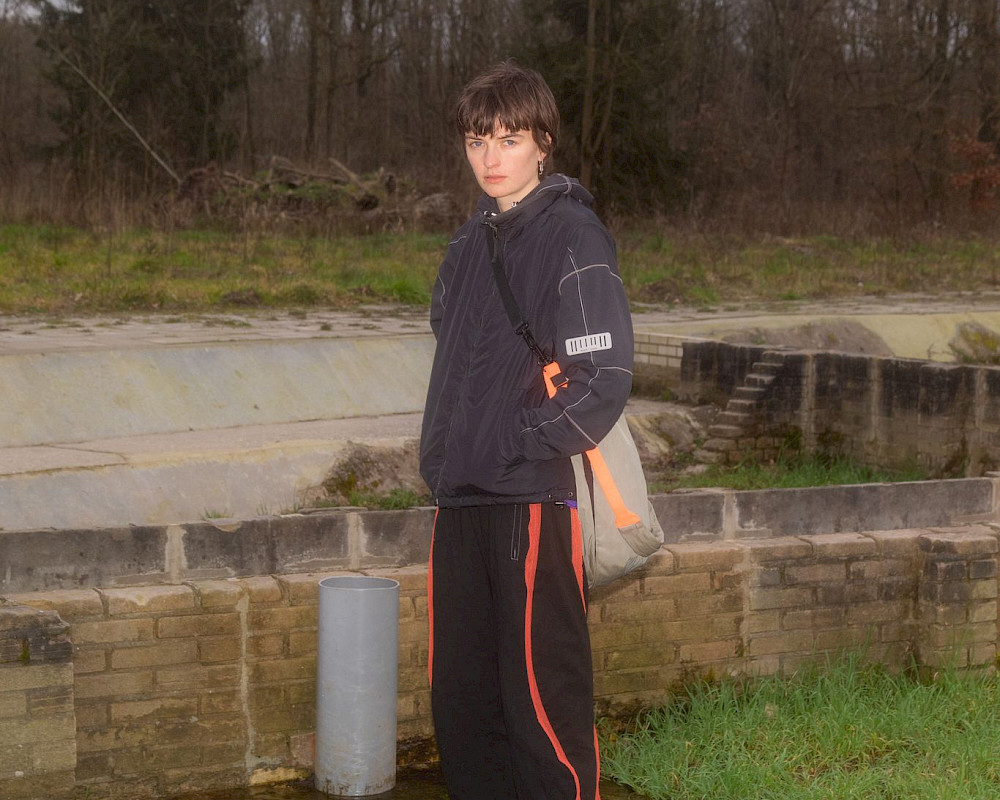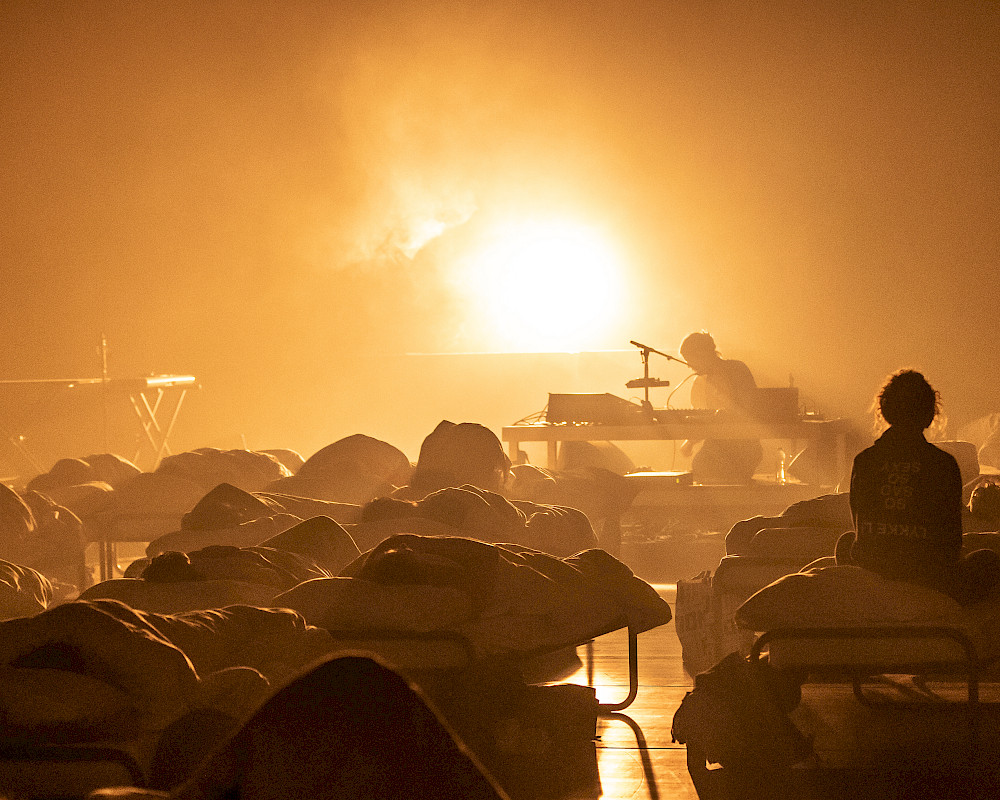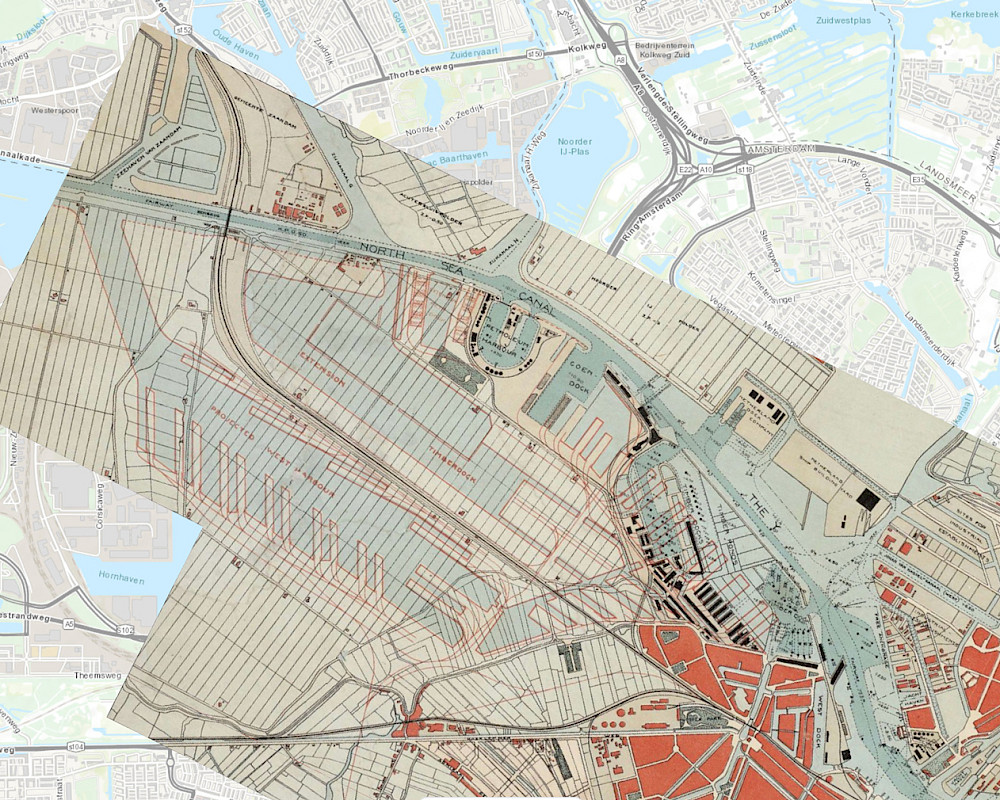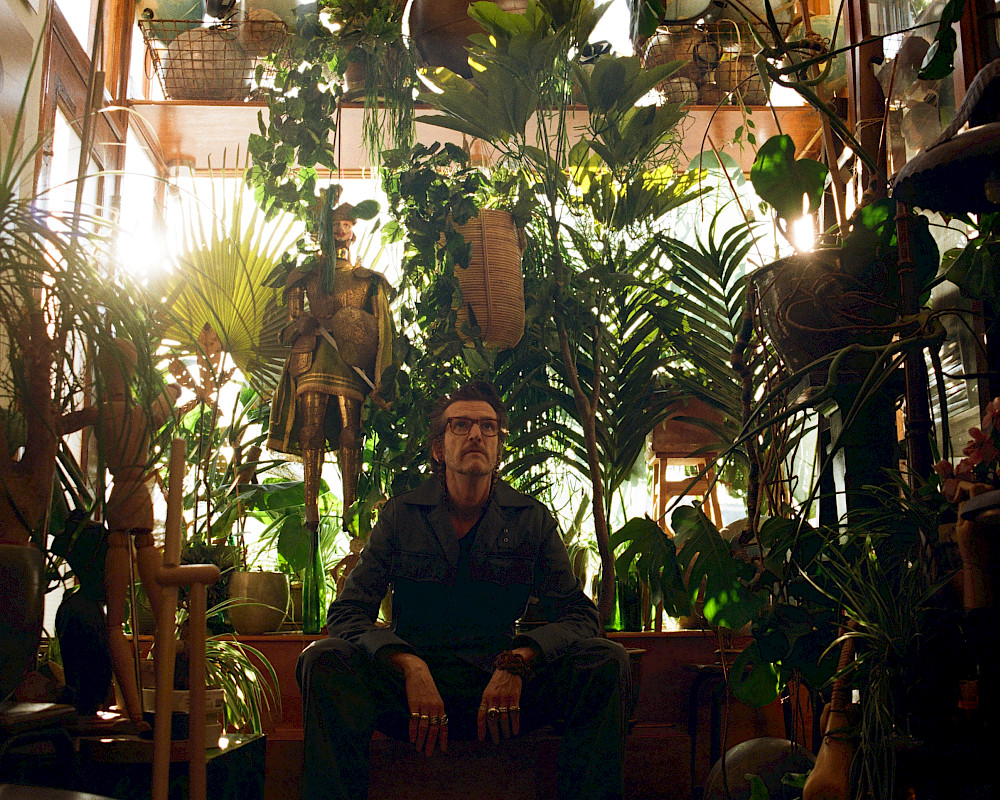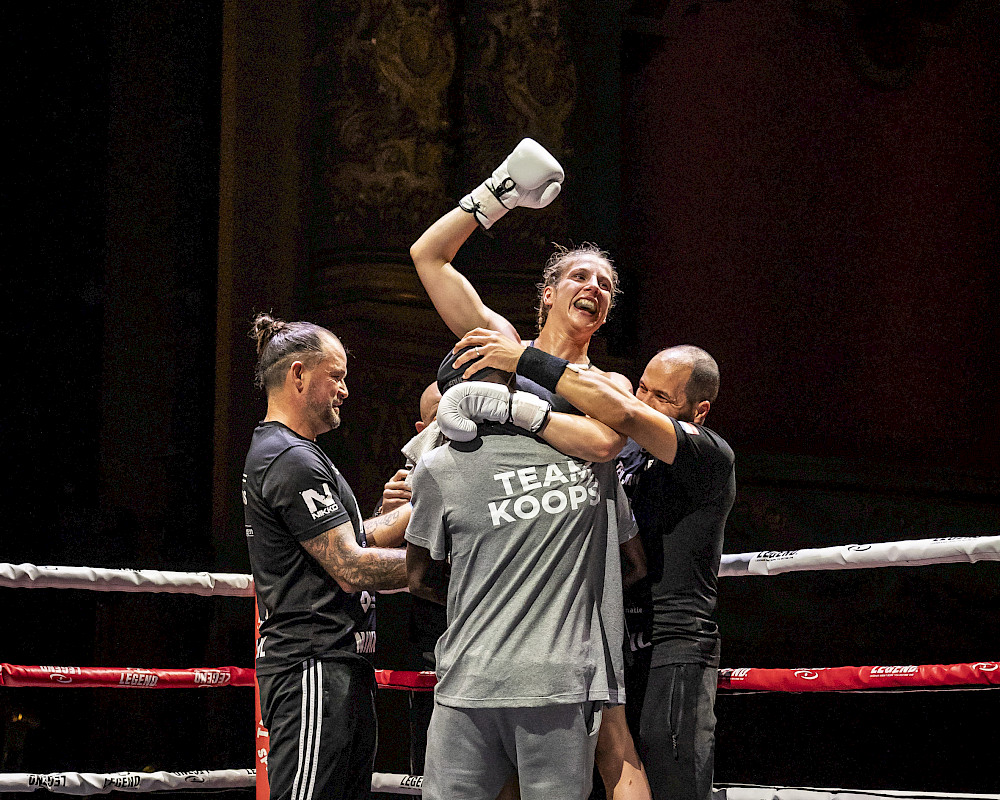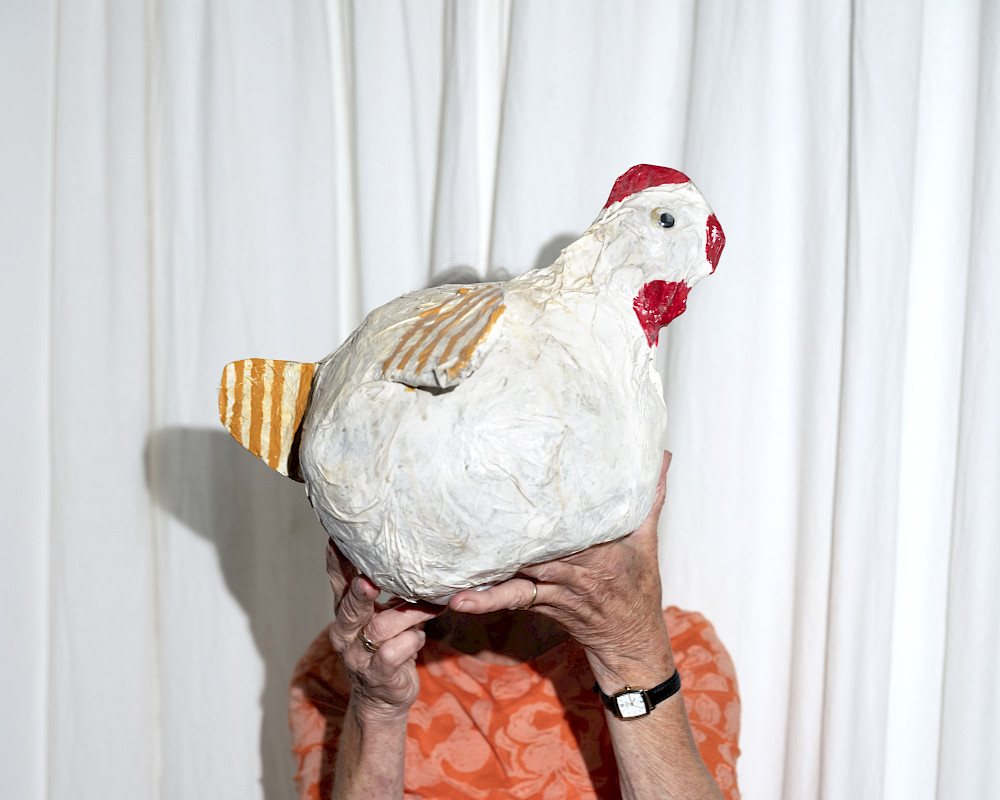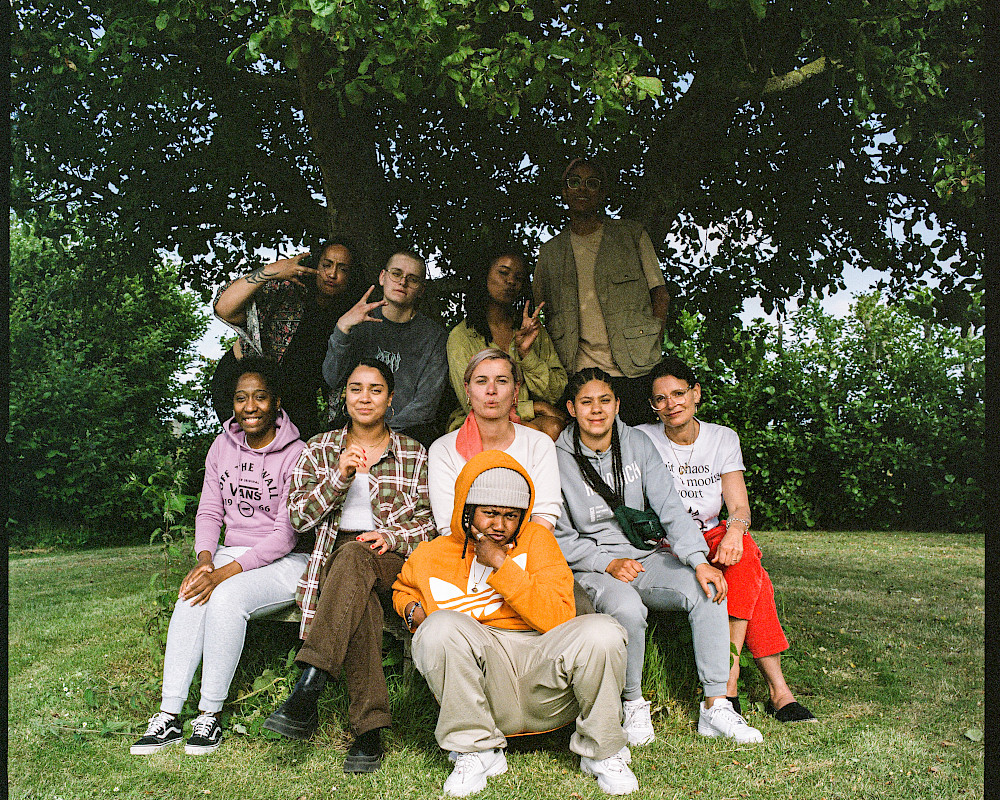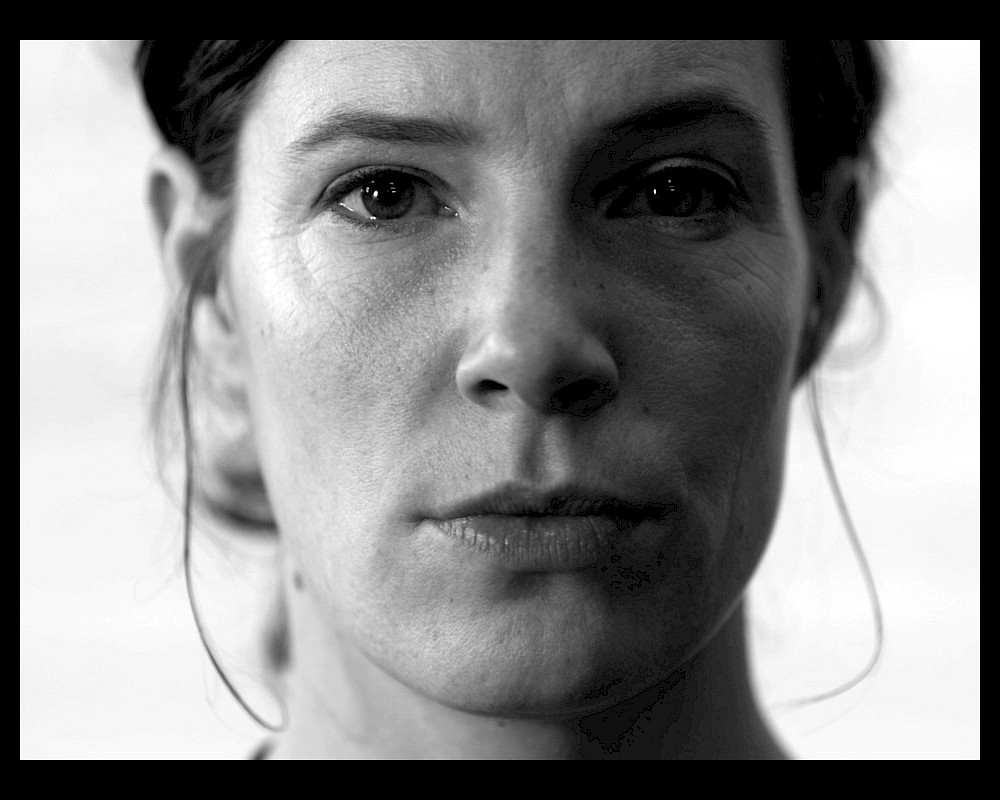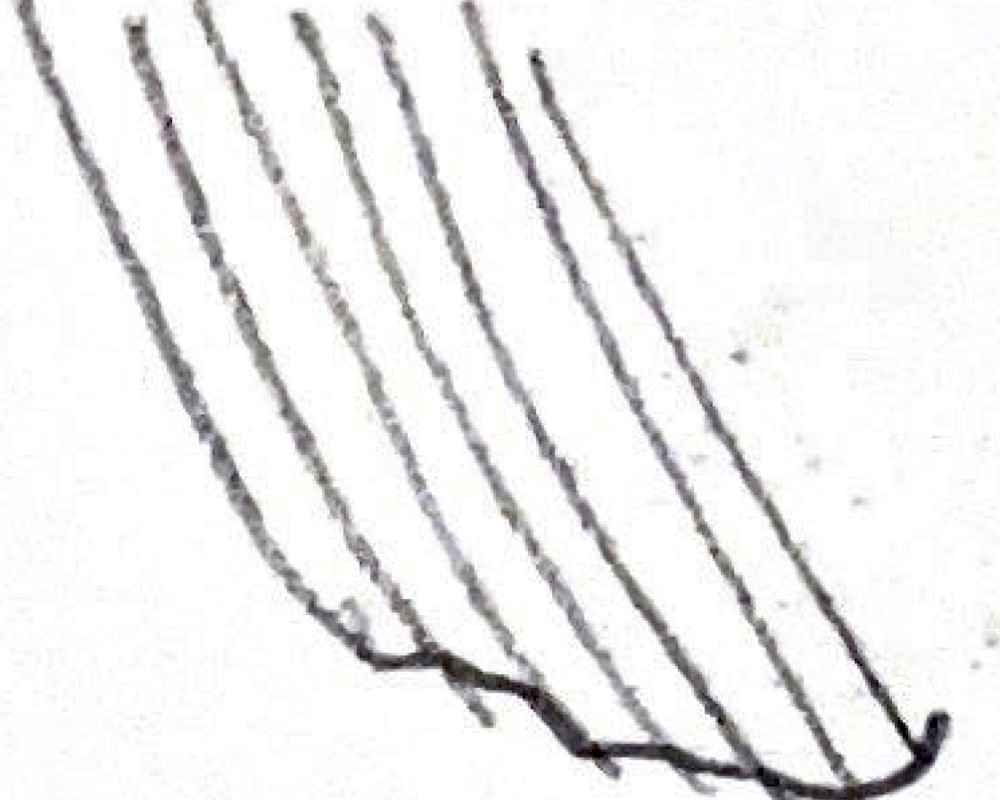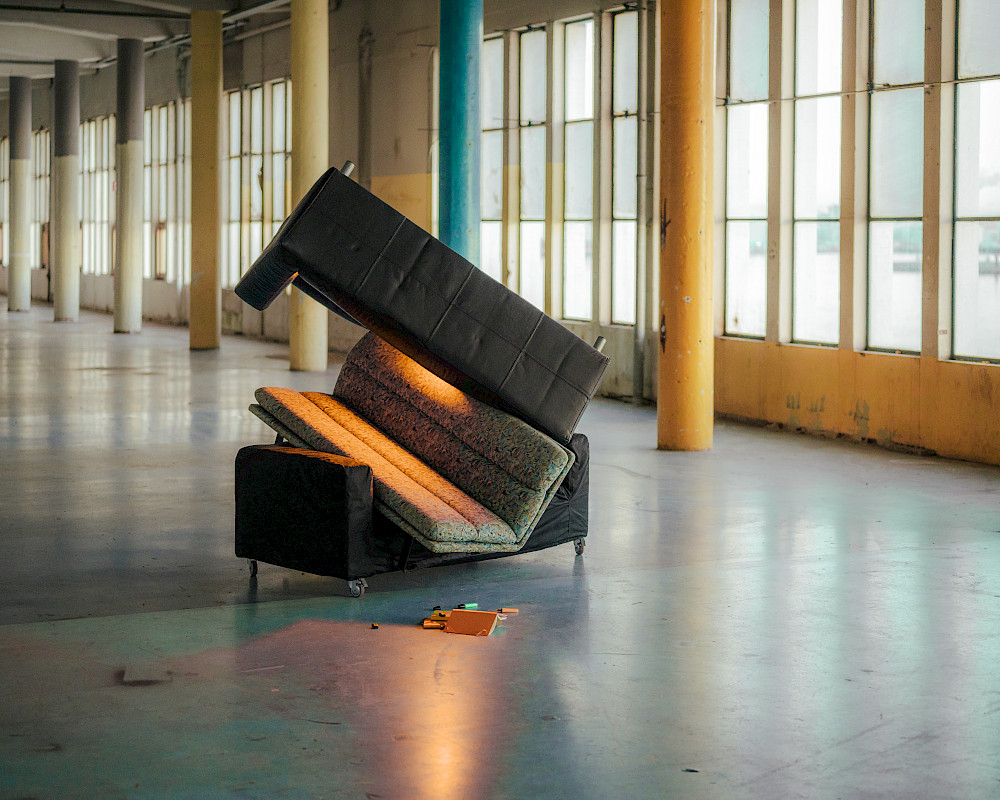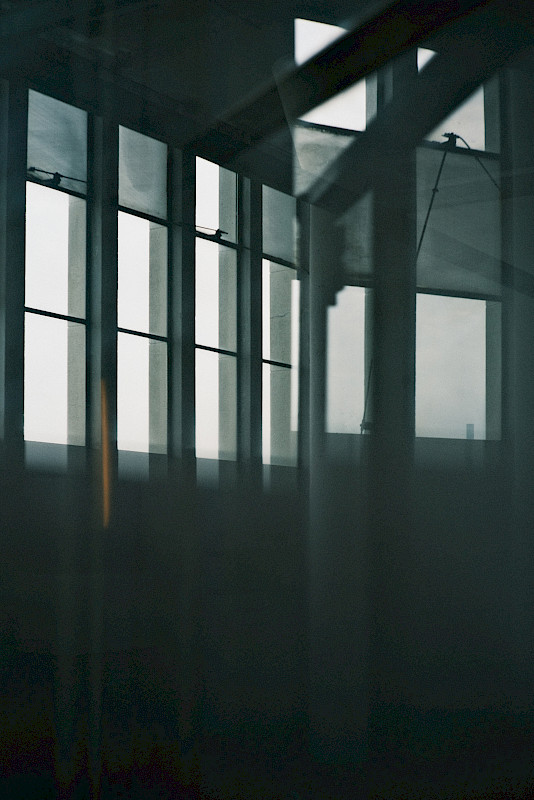
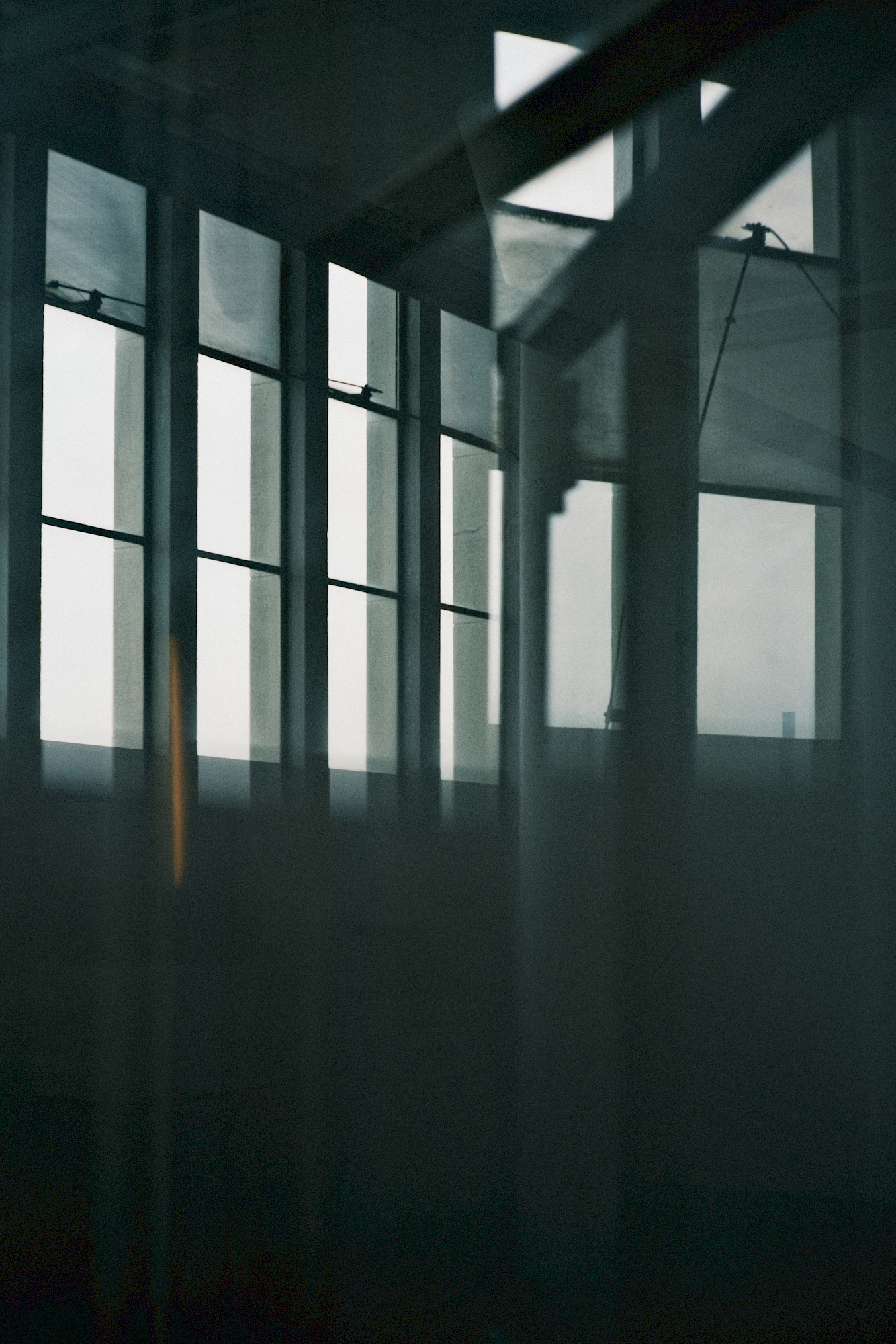
Marcel Fraij is a photographer, artist, and teacher based in Zaandam. He came to take pictures of the building of Het HEM a while ago, in which he investigated the versatility of the site, questions of memory and remembrance, and the ambiguity of the space itself. In his photographic practice he offers a unique lens to look at the world, and in Het HEM, he guides the viewer to explore the building through reflections, blurriness and contrasts. With Het HEM temporarily closing its doors to visitors during renovations, the role of the site itself in artistic production can be questioned and renegotiated.
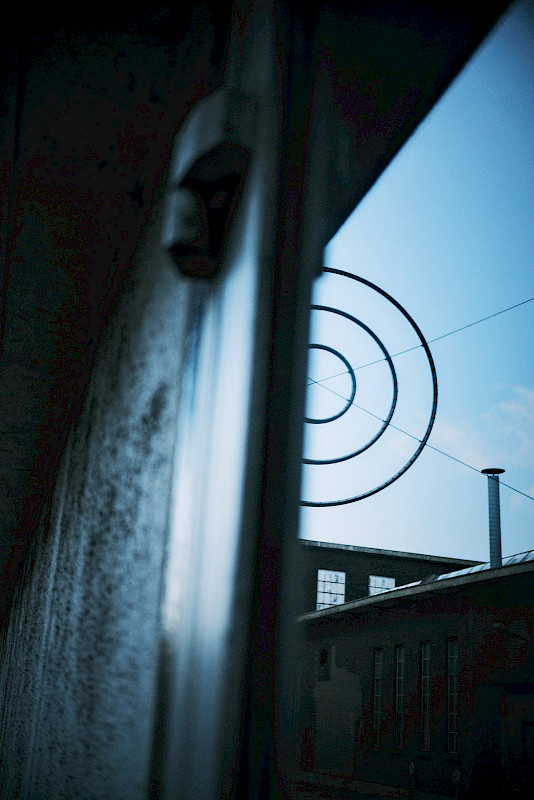
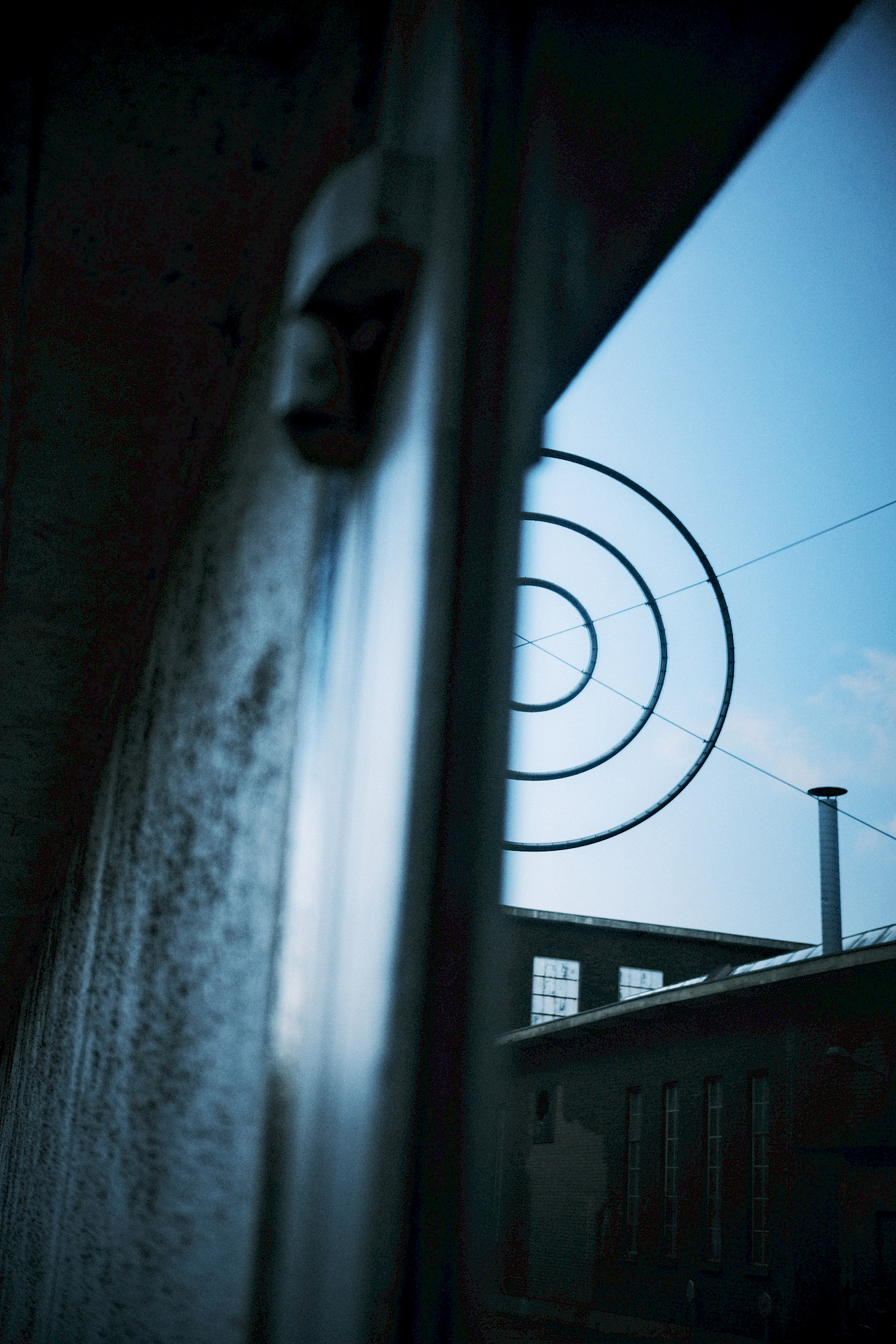
HH: I really enjoyed looking at your photographs that you made using the architecture of the building. With their bluish color palette, they have a mysterious feel, yet they are somehow still soothing. They don’t create an unsettling feeling that the emptiness and abandonment of the building would cause in other situations. How did the idea occur to you to take pictures in Het HEM? What was your inspiration behind it?
Marcel: I had just done a study of the work of photographer Saul Leiter. I was particularly fascinated by his painterly approach: layers where it is not entirely clear whether they are foreground, background or subject. He shows an interpretation of reality that raises many questions. And I find that interesting. No answers, but questions. I only knew the building of Het HEM from the outside, because I often photograph on the Hembrugterrein, and from publications. I had never been inside, but I was aware of the history.
HH: How did the space itself influence the style of your pictures?
M: When I got permission to come in and photograph the building, and saw the space for the first time, everything came together: the layers that contain all kinds of traces of the past and present represent the history and the different purposes that the building had and has. With this way of photography they flow into each other, like the different times, so that it is no longer clear what is past and present.
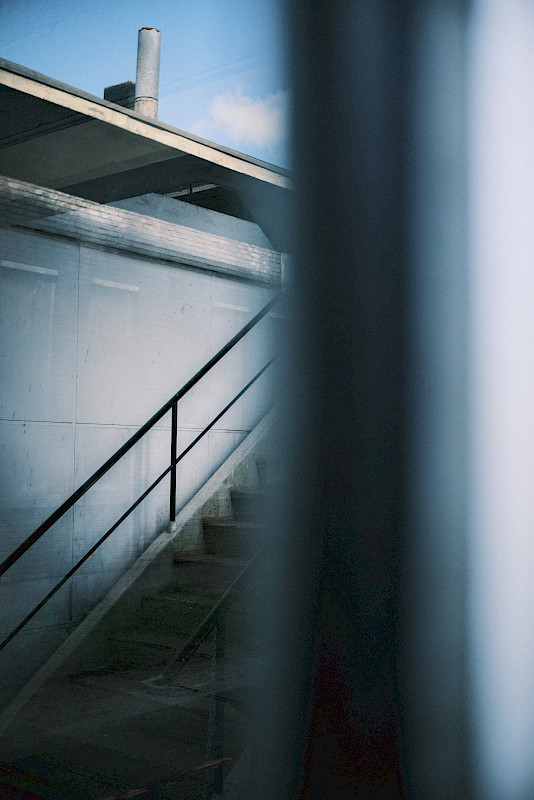
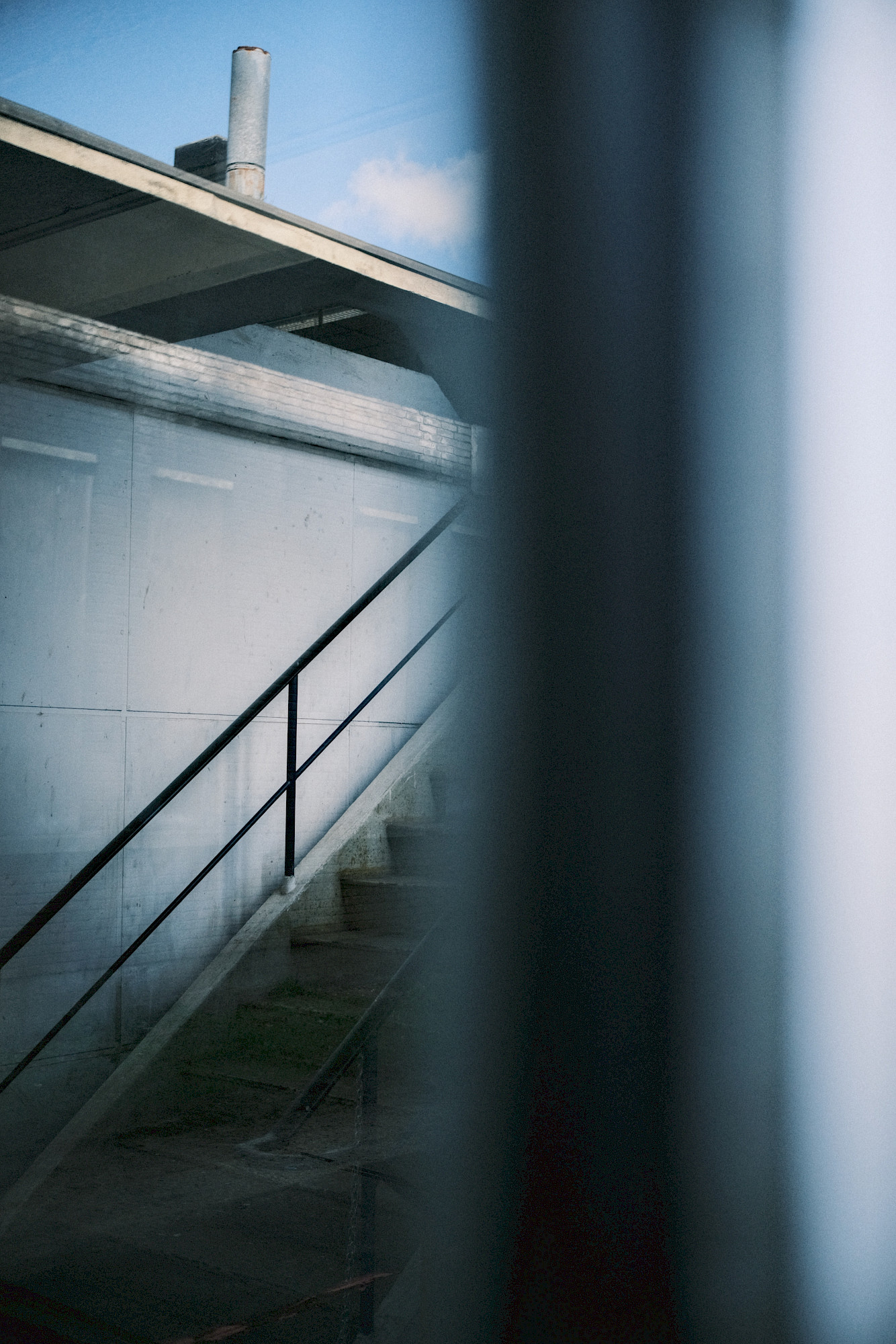
HH: In your shots, the line between interior and exterior, reality and its reflection seem to blur. Does this theme come back elsewhere in your photographic practice? What does this blurriness between the world and its representation say about the nature of the photographic image itself?
M: Actually, it's how I experience the world. Watching and observing is a very personal and different experience for every person. You look at things not as they are, but as you are. This is of course reflected in all my work; one time a little clearer than the other time. An inside and outside experience can have a physical cause, but in the mental world it can be one.
HH: Through your artistic interpretation, the building comes across as a sort of liminal space, a terrain free from being fixed in a specific physical location at a particular point in time. It holds past, present and future within itself through the memory of the walls that remember that it once was a factory building, while also bearing the endless possibilities of its current uses as a space for art and music. What sort of in-betweenness do you think Het HEM facilitates?
M: All those layers and traces that this building contains cannot be pinned down to a certain time or place. That makes it interesting. It is like a kind of transitional tracking, where time and space are interchangeable and where the outcome is not clear and need not be. Het HEM has it all.
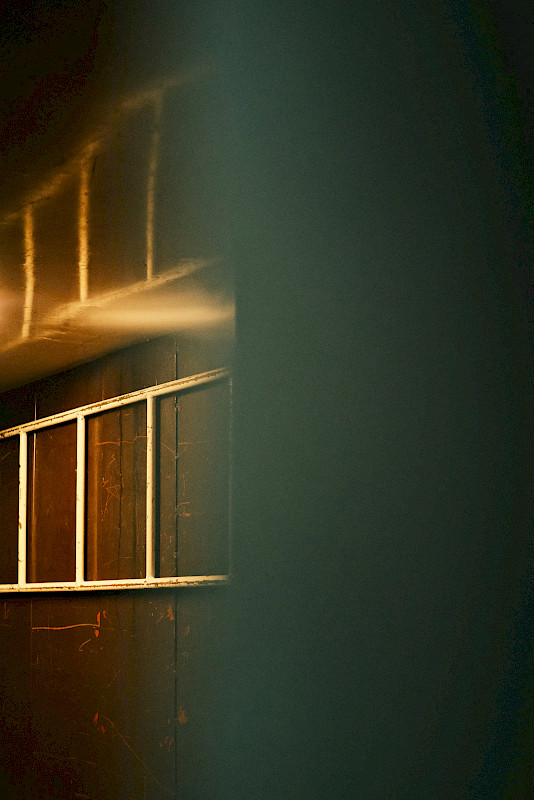
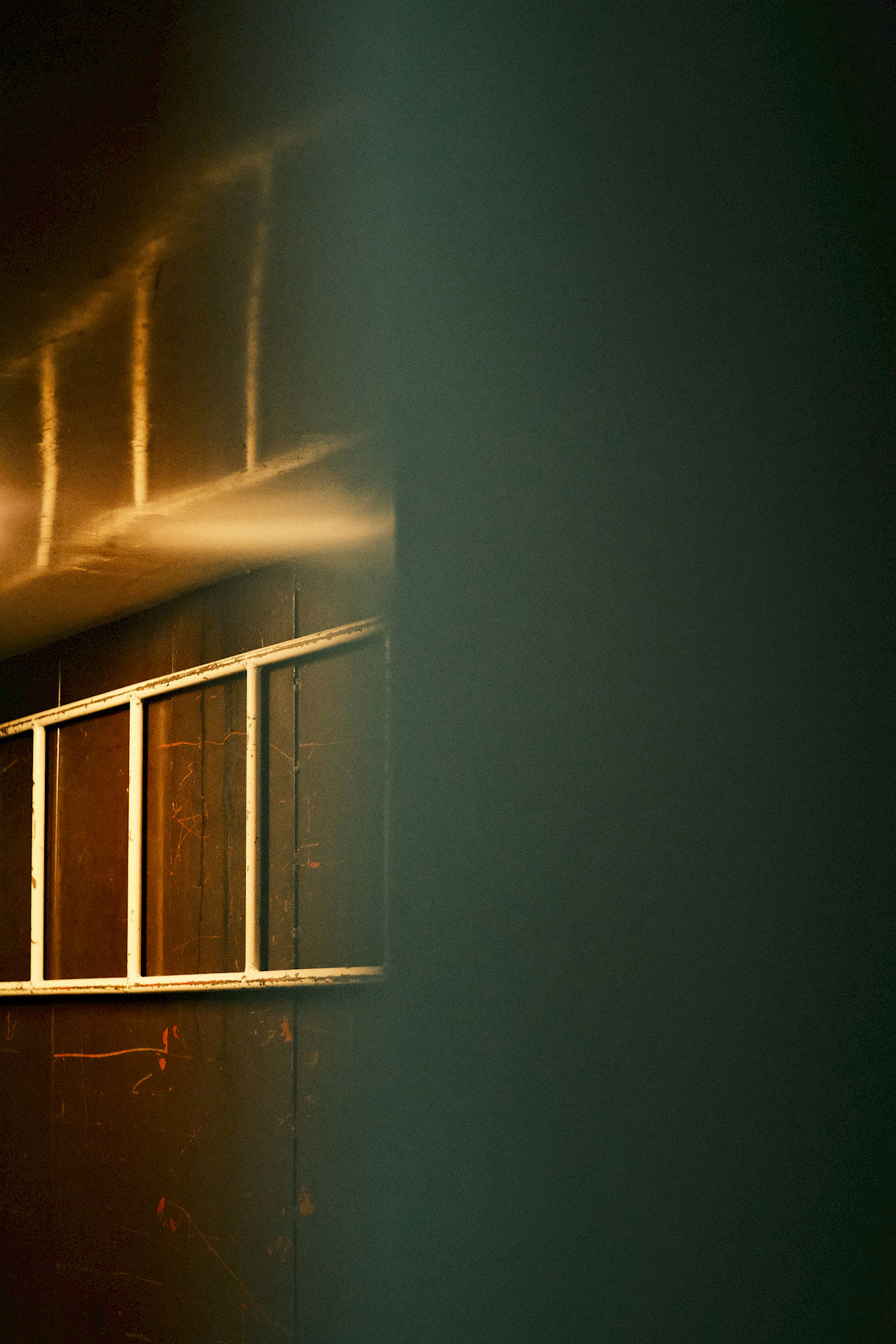
HH: When you think of a window, what associations come up? Is it positive, negative, or more neutral?
M: Interesting question. Neutral, but not indifferently neutral. Rather neutral as a given and offering possibility. The reflection, but also the transparency in one. The physical framing, but the invisible and still open world that moves next to it.
HH: What have you been up to since you took these photos at Het HEM ? Are there topics from the project that still interest you and are part of your photographic investigations?
M: Actually, the project is still running. At least: I have received even more time and cooperation from Het HEM. I will continue, but with new insights (this interview helps with that too, so thank you!). I don't know yet how that will be. The important thing is that I will be there in a few weeks and look at it with new eyes. To experience the space again without judgement.
